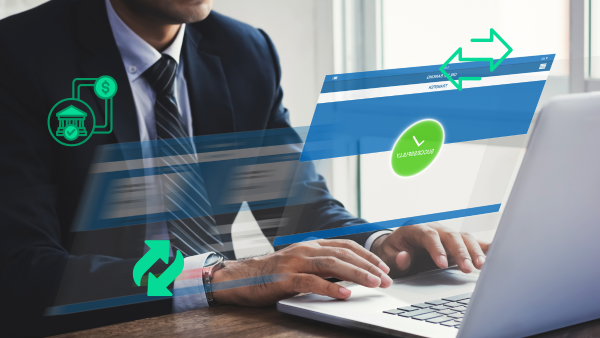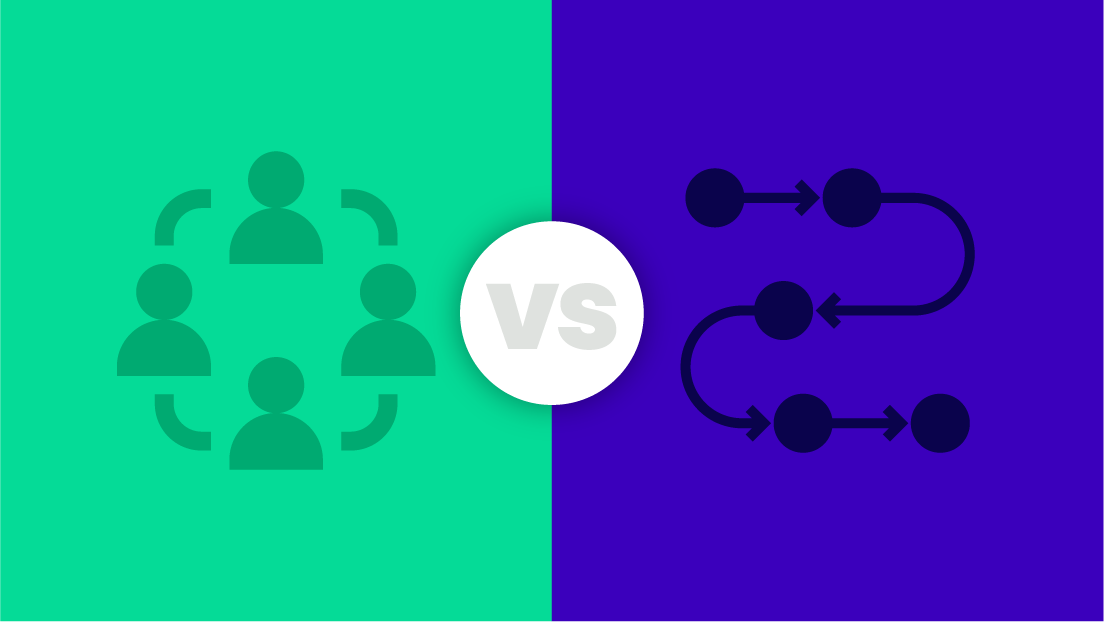Many businesses rely on manual spreadsheets to manage their accounts receivables process, often with each individual collector only having information about his or her own accounts. This makes the process cumbersome, prone to human errors and challenging when collaboration is necessary between different collections agents, A/R roles or departments within your business.
The hard truth is that you can’t operate, let alone grow as a business without an efficient A/R operation and good records that are visible to everyone. Understanding how to maximize your accounts receivable process to its potential and help your business thrive in a crowded marketplace is essential if you want to properly manage, reliably predict – and even accelerate your cash flow.
A Traditional Accounts Receivable Process Workflow
A traditional accounts receivable process begins when a customer makes a purchase for a product and/or service (think of accounts receivable as an “IOU”) and ends once the outstanding payment has been collected. An accounts receivable workflow is the step-by-step process taken to record and collect the debt.
Often, a company’s A/R collections method is more circular rather than linear because the process begins all over again when the customer makes a new purchase. Reliable, repeat customers can remain within the collections process until they stop doing business with you, which could be years or decades down the road.
An accounts receivables collections process flow might look something like this:
- Sales and delivery. Communication with customer regarding a product or service resulting in sales/deliver
- Credit check Ask the customer to apply for a line of credit and/or run a credit check on the customer via a credit reporting company.
- Invoice. A/R department sends invoice to the customer
- Payment collection. Customer typically has 30 days to pay
- Reconciliation. Process begins again as payment is collected or written off
Extra steps could include:
- Sending payment reminders mid-month
- Sending late payment reminders
- Escalating the matter further if the customer does not make payment
Again, it’s common for repeat customers – especially those that purchase a wide range of products or services from you – to have many invoices working through the A/R collection process simultaneously.
5 Tips for Optimizing the Accounts Receivable Collections Process
It’s one thing to understand what an accounts receivable collections process is. It’s another to make the most of your own procedure to ensure prompt payment and efficient operation.
These tips can optimize your accounts receivable collections process:
1. Establish a Collections Database
The days of paper and pen invoicing have long been out of style. Improving your collections process starts with implementing a digital collections system and establishing a database.
Modern accounting database and automation solutions come equipped with all kinds of analytics tools you can use to maximize collections potential and minimize accounting mistakes. Advanced accounts receivables analytics platforms enable you to gain insights and measure performance on A/R teams from both an individual and team perspective.
2. Maintain a Standard Aging Process
Typically, you want your customer to pay within 30 days, but you’ll have clients stretch beyond this boundary.
It’s helpful to establish “buckets” for invoices to track how long a bill has been outstanding. Timeframes commonly include 0-30 days, 31-60 days, 61-90 days and 90+ days.
You’ll use different collection strategies for invoices in each timeframe collection bucket. Having invoices segmented effectively will help your A/R team know which strategy/call/reminder needs to be sent and when.
3. Prioritize High-Value Accounts
Accounts receivable success is all about reliable cash flow. You can maximize ROI when you prioritize high-value accounts. Ensure your staff focuses most on the invoices that make up the bulk of your outstanding receivables.
That’s not to say some invoices aren’t important. All of them are. But some invoices need more attention and collection savvy than others.
4. Proactively Manage Your Dispute Process
Reduce the administrative burden on your A/R collections team by minimizing disputes. First, ensure each invoice includes the correct details such as the product or services the customers paid for, the date of the purchase and amount they agreed to pay. Second, allow all customers access to all past invoices to help them compare prices between current and past purchases. Third, understand as soon as possible the reason behind partial – payments – was it a dispute or a mistake? Finally, consider having a centralized place for all disputes that includes the relevant data to make it as easy as possible for your team to track.
5. Implement Analytics and Reporting
Keeping track of endless invoices and managing collections can be overwhelming and costly, especially as your business scales. That’s why many businesses choose to implement some form of accounts receivable management automation. Automation eliminates the risk of human error involved in repetitive manual tasks, boosting productivity and collections efficiency.
Improve Your Accounts Receivables Process Flow with Gaviti
Keeping track of endless invoices and managing collections can be overwhelming and costly, especially as your business scales. That’s why many businesses choose to implement some form of accounts receivable management automation. But you don’t have to sink a lot of extra time and resources to automate your accounts receivables process.
Gaviti’s invoice-to-cash A/R management and automation streamlines your entire accounts receivable process from customer invoice distribution to credit application and payment reconciliation. With its ERP agnostic platform, customers have effectively improved their DSO by up to 30%.
Its modules include:
- Customer Self-Service Portal. Increase the likelihood of timely payments from customers by offering multiple payment methods, including credit cards, debit cards, ACH transfers, electronic payments, and more. Support multiple currencies through integration with multiple payment gateways and processors, including Stripe and Bluesnap.
- Cash Application. Associate each payment with its corresponding invoices for precise application and reconciliation of payments with remittance information such as invoice numbers or payment references. When using the portal, it can match payments to open invoices with near 100% accuracy.
- Credit Management and Monitoring. Automatically manage customer credit from the credit application process through ongoing monitoring with real-time credit risk alerts. Tailor the risk assessment process of each customer according to the requirements that align with your business needs.
- Accounts Receivable Analytics. Aggregate information about your receivables into one customer dashboard that includes comprehensive metrics such as Median Days Delinquent (MDD), best DSO, customer risk, payment forecasting and more.
- Dispute Management and Deductions. Streamline the tracking, coding, routing, and resolution of customer invoice deductions and disputes. Automate workflows and foster collaboration using a centralized hub that tracks and manages customer invoice deductions and disputes.
Want to learn more about how you can optimize the accounts receive process and reduce DSO by up to 30%? Speak to a specialist today.





















